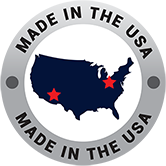Industrial Thermocouples
Industrial thermocouples are essential for temperature measurement across a wide range of industrial applications, offering both durability and adaptability. With their ability to be customized in terms of calibration, sheath materials, junction types, and diameters, these thermocouples are highly versatile and can be tailored to meet the specific needs of various industrial processes.
Metal-Sheath (MgO) Thermocouples
Applications
Heat Treating, Forging, Annealing, Hardening, Engine Testing and Monitoring, Specialty Metals Processing, Oil & Gas Refining, Exploration & Extraction
Technical Data
Calibration: B, E, J, K, N, R, S, & T
Sheath Diameters: 0.010” – .750”
Sheath Materials: Inconel, Stainless Steel & Platinum
Junction Construction: Grounded, Ungrounded & Exposed
Extension Leads: Multiple Extension Lead Options
Termination: Multiple Connector & Termination Head Options
Hardware: Multiple Mounting Hardware Options
Certification: Individual or Lot Certification; Special Limits of Error
Small Diameter Rapid-Response Thermocouples
Applications
Turbine Testing, Laboratories
Technical Data
Calibration: B, E, K, N, R & S
Junction Construction: Grounded, Ungrounded & Exposed
Extension Leads: Multiple Extension Lead Options
Termination: Multiple Connector & Termination Head Options
Certification: Individual or Lot Certification; Special Limits of Error
Reduced diameter tips are also available in this configuration.
Applications
Steel Production, Waste Incineration, Heat Treating, Salt Baths, Rotary Kilns
Technical Data
Calibration: E, J, K, N, M & T
Junction Construction: Grounded, Ungrounded & Exposed
Extension Leads: Multiple Extension Lead Options
Termination: Multiple Connector & Termination Head Options
Hardware: Multiple Mounting Hardware Options
Certification: Individual or Lot Certification; Special Limits of Error
Applications
Non-Ferrous Molten Metals
Technical Data
Calibration: K
Sheath Diameters: ½” OD
Sheath Materials: 446SS
Accuracy: Special Limits of Error
Extension Leads: Multiple Extension Lead Options
Applications
Chemical Plants, Refineries, Process Validation
Technical Data
Termination and Hardware: Fittings, Heads & Other Terminations.
Certification: Individual or Lot Certification; Special Limits of Error



